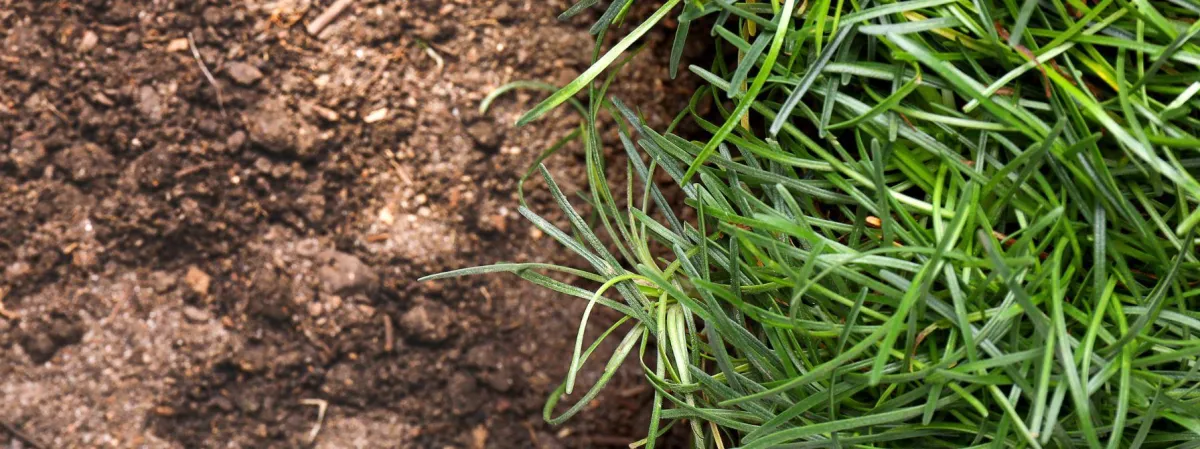
Overcome Lawn Growth Issues: Key Soil Problems in Baltimore
Do you struggle to maintain a healthy lawn in Baltimore? Many homeowners face soil problems that hinder lawn health and growth potential. This article will explore common soil issues in the area, how to test your soil’s health, and the best practices for lawn maintenance. By addressing these concerns, you will learn how to improve your lawn's vitality and ultimately enjoy a lush, green yard. Understanding these challenges will empower you to create a thriving outdoor space.
Understanding Soil Quality and Its Role in Lawn Health

Soil quality plays a crucial role in the overall health of your lawn. Good quality soil supplies essential nutrients and organic matter that support grass growth, which is vital for creating a lush meadow. Without adequate nutrients, your lawn may struggle to thrive, leading to weak grass that cannot withstand environmental pressures.
Proper drainage is another key aspect of soil quality that affects lawn health. In Baltimore, soil with poor drainage can lead to water pooling near sidewalks, which not only damages grass but can also promote the growth of mold and pests. Ensuring your lawn has adequate drainage is critical for maintaining a healthy turf.
In urban areas, such as Baltimore, soil contamination, including elevated lead levels, can pose significant threats to your lawn's growth potential. Contaminated soil can hinder the absorption of vital nutrients and impact overall soil health. Testing your soil for contaminants is a prudent step in maintaining a safe and thriving landscape.
Common Soil Issues Affecting Lawn Growth in Baltimore
In Baltimore, several soil issues can hinder your lawn's growth and health. Soil compaction affects root development, restricting grass access to essential nutrients and moisture. Nutrient deficiencies can reduce grass resilience, making it vulnerable to pests. Additionally, an unbalanced soil pH impacts nutrient availability, while poor drainage can create waterlogged conditions detrimental to your lawn's ecosystem. Understanding these factors is vital for effective lawn care.
Soil Compaction and Its Impact on Root Development
Soil compaction is a significant issue that directly affects root development and overall lawn health in Baltimore. When soil becomes compacted, it limits the space available for roots to grow and access essential nutrients, leading to weak grass that cannot effectively compete with invasive plants and algae. This condition particularly impacts rhizome growth, which is crucial for grass propagation, threatening the ecosystem and potentially harming habitats near waterways, such as those protected by the Chesapeake Bay Program. By aerating your lawn and addressing compaction, you can enhance soil health and promote a thriving green space.
Nutrient Deficiency and Its Effect on Grass Resilience
Nutrient deficiency significantly impacts grass resilience, making it difficult for seedlings to establish and thrive. In environments dominated by impervious surfaces, like concrete and asphalt, rainwater runoff often overwhelms natural soil processes, leading to inadequate nutrient replenishment. As a result, your lawn may struggle to develop a healthy canopy, restricting its ability to withstand stress from pests and environmental factors. Addressing nutrient shortages through soil testing and targeted fertilization can improve your lawn’s overall vitality and performance, especially in areas affected by nearby storm drains that may contribute to nutrient loss.
Soil pH Imbalance and Its Consequences for Lawn Health
An imbalance in soil pH can lead to significant challenges for your lawn's health, particularly in urban settings like Baltimore. Factors such as air pollution from nearby roads and the use of herbicides can contribute to this issue, affecting the availability of nutrients essential for grass growth. For instance, an excessively acidic or alkaline soil can hinder nutrient absorption, making it difficult for your lawn to thrive, especially following heavy snow that may wash away vital resources. Understanding your soil's pH and taking steps to amend it will set the stage for a healthier, more resilient lawn.
Poor Drainage and Waterlogged Soil Conditions
Poor drainage and waterlogged soil conditions can severely limit your lawn's health in Baltimore. Heavy clay soils often lead to compaction, making water infiltration difficult. Rather than adding sand, it's better to incorporate organic amendments such as compost, which improve soil structure, drainage, and overall soil health. Additionally, using the right fertilizer can support the growth of native species suited to local conditions, helping your lawn thrive even in challenging circumstances.
Recognizing Symptoms of Soil Problems in Your Lawn
To maintain a vibrant lawn in Baltimore, it is essential to recognize symptoms of soil issues. Watch for stunted growth and patchy areas in turf, as these indicate underlying problems. Changes in the grass and soil color may signify nutrient deficiencies or water pollution. Also, observe any signs of pests and diseases that could escalate from soil health complications.
Identifying Stunted Growth and Patchy Lawns
When you notice stunted growth and patchy areas in your lawn, it may signal underlying soil issues that require attention. In urban green spaces like those found in Maryland, pollution can disrupt nutrient availability, further affecting grass and shrub health. This problem can also manifest around tree trunks, where competition for resources intensifies, making it crucial to assess soil conditions and implement corrective measures to restore healthy growth.
Understanding Color Changes in Grass and Soil
Color changes in grass and soil can indicate underlying issues, such as contamination or improper climate conditions. For instance, if you notice your grass turning yellow or brown, it may suggest nutrient deficiencies or the presence of harmful substances that affect growth. Additionally, changes in soil color, like darkening, can imply organic matter breakdown or waterlogged conditions, impacting groundcover and vine health in your yard.
Observing Signs of Pests and Diseases Related to Soil Issues
When examining your lawn, be vigilant for signs of pests and diseases, as these can indicate underlying soil issues. For example, the presence of insects can signal poor soil health, especially if you notice high concentrations around the edges of pavers, which can disrupt drainage and affect grass vitality. Using fresh or improperly composted manure as fertilizer can potentially attract pests or promote weed growth. Ensure manure is fully composted before applying it to your lawn to avoid these issues. You must monitor for any irregularities in grass color or vigor, which may hint at nutrient imbalances exacerbated by metal contaminants within the soil. Observing these signs early allows you to address the root causes and restore your lawn’s health effectively.
Amending Soil to Improve Lawn Vitality
Improving your lawn's vitality begins with effective amending techniques. Utilizing organic amendments like compost and woodchips enhances nutrient recycling, essential for fostering healthy soil. Aerating compacted soil allows for better water infiltration and promotes root development. Additionally, correcting soil pH levels ensures the availability of vital nutrients, addressing underlying issues that lead to dead zones in your lawn.
Organic Amendments for Nutrient Recycling
Incorporating organic amendments, such as compost and well-rotted manure, can significantly enhance your topsoil's health and nutrient content. These amendments improve soil structure by promoting better drainage and water retention, which is crucial for managing stormwater in urban environments like Baltimore. As you mow your lawn, consider leaving grass clippings on the surface; this practice recycles nutrients back into the landscape and aids in reducing nutrient pollution, further supporting your lawn's growth potential.
Methods for Aerating Compacted Soil
Aerating compacted soil is essential for improving your lawn's health in Baltimore, especially in areas where sediment buildup and tree roots can create barriers. One effective method is core aeration, which involves removing small plugs of soil to allow air, water, and nutrients to penetrate deeper into the ground. Doing this regularly, particularly after heavy storms, helps alleviate compaction and promotes healthier sod growth, ensuring your grass thrives even in challenging conditions.
Techniques for Correcting Soil pH Levels
To effectively correct soil pH levels in your Baltimore lawn, start by incorporating organic materials like compost, which helps balance acidity and supports biodiversity. If you discover your soil is too acidic, adding lime can increase pH and promote better nitrogen absorption, essential for healthy grass growth. Monitoring your lawn's response after these amendments will ensure you are fostering an environment that supports local wildlife and enhances your landscape's vitality.
Best Practices for Lawn Maintenance in Baltimore

Selecting the right grass types suited for local conditions significantly enhances your lawn's resilience against soil problems. Employing proper watering techniques supports healthy soil and plant growth. Additionally, implementing seasonal care strategies, such as effective weed control through alternative methods, can provide added benefits. Carefully managing the use of herbicides like glyphosate and considering the introduction of native plant species can contribute to your lawn's health and biodiversity.
Selecting the Right Grass Types for Local Conditions
Selecting the right grass types for your lawn is essential for optimal growth and health in Baltimore's unique environment. Begin by conducting a soil test to determine nutrient levels and pH balance, which informs your choice of grass varieties. For areas with shade tolerance, consider fescue blends that thrive under tree cover, while sunny spots may benefit from bluegrass or Bermuda grass, promoting robust germination rates and minimizing waste associated with poor grass selection.
Proper Watering Techniques to Support Healthy Soil
To support healthy soil in your Baltimore lawn, it's essential to adopt proper watering techniques. Aim for deep and infrequent watering, which encourages root growth and improves the soil's ability to retain moisture. This method not only promotes a resilient lawn but also helps mitigate common soil issues like compaction and nutrient runoff, enhancing your grass's overall health and growth potential.
Seasonal Care Strategies to Enhance Soil Quality
Implementing seasonal care strategies is vital for enhancing soil quality and promoting a healthy lawn in Baltimore. During the spring, focus on aerating your lawn to combat compaction and improve air circulation, allowing nutrients and water to penetrate more effectively. In the fall, applying organic mulch helps retain moisture and adds essential nutrients back into the soil, fostering a robust environment for root development through the winter months.
Conclusion
Understanding the topsoil challenges affecting your lawn in Baltimore is essential for creating a vibrant, healthy landscape. Issues such as soil compaction, nutrient deficiencies, drainage problems, and pH imbalances can severely limit your lawn's growth and vitality. HMD Landscaping specializes in identifying and addressing these specific soil problems through effective soil testing, targeted amendments, and customized lawn care practices. By partnering with professionals who understand Baltimore’s unique soil conditions, you can ensure your lawn achieves its full growth potential, resulting in a lush, resilient, and inviting outdoor space.
